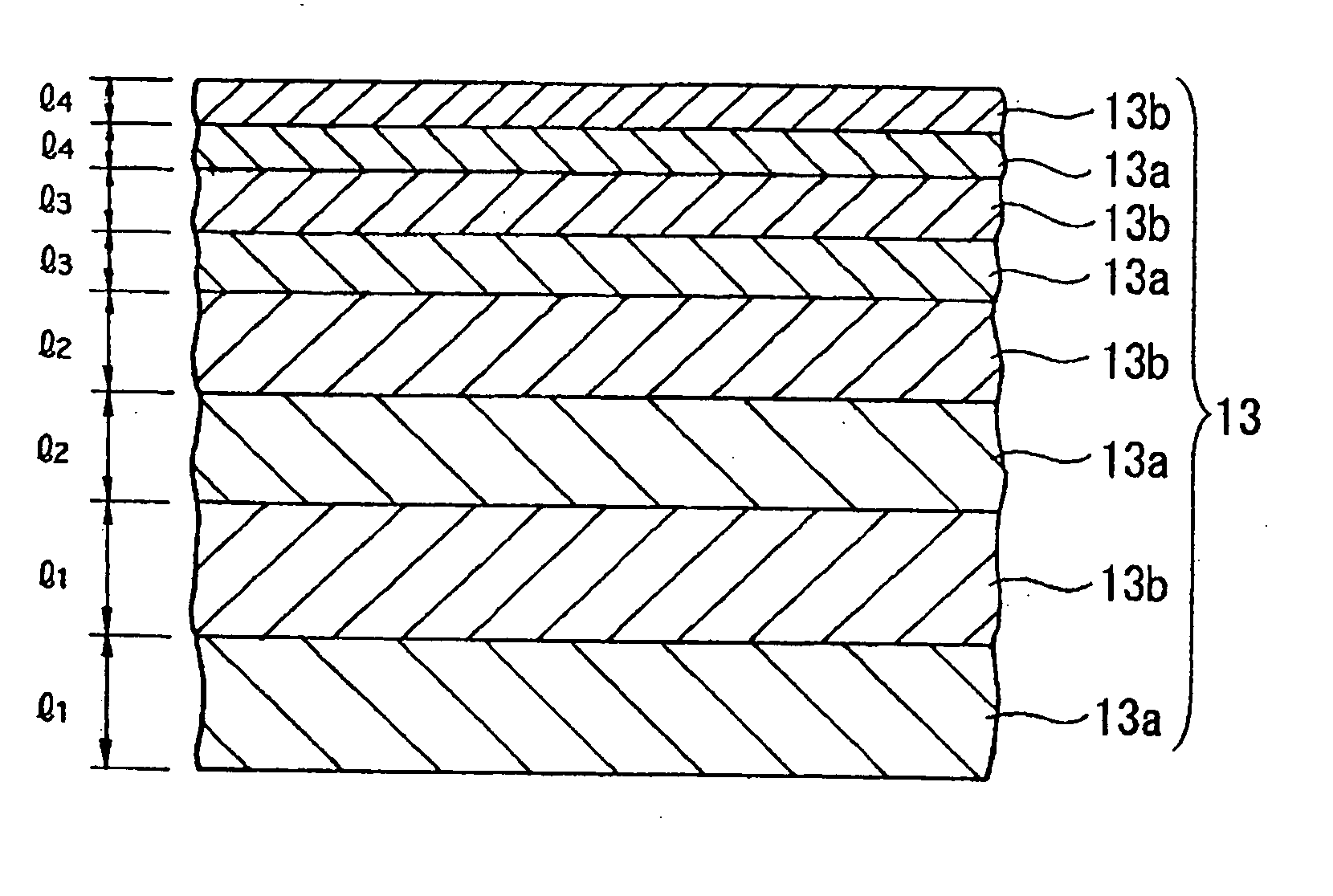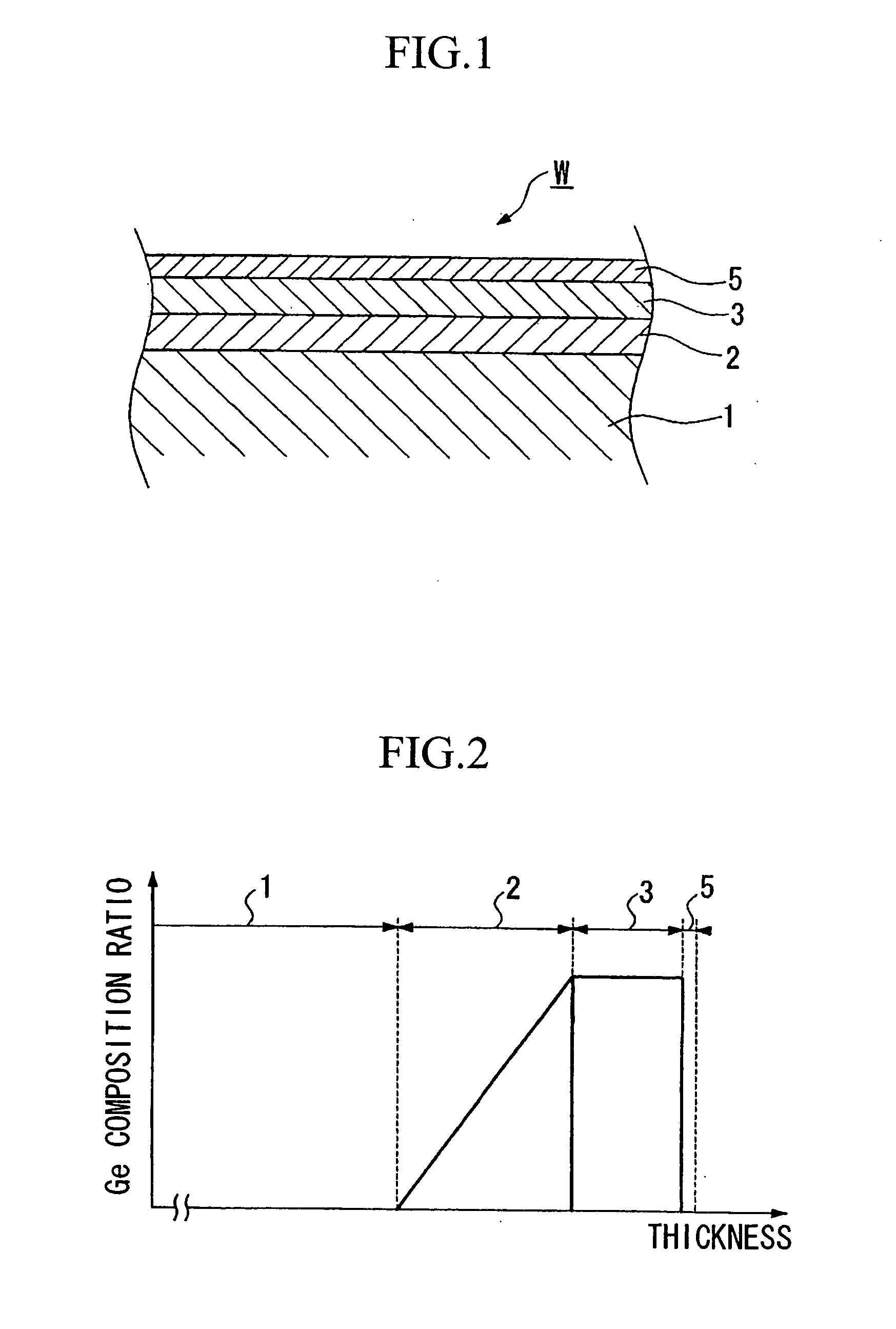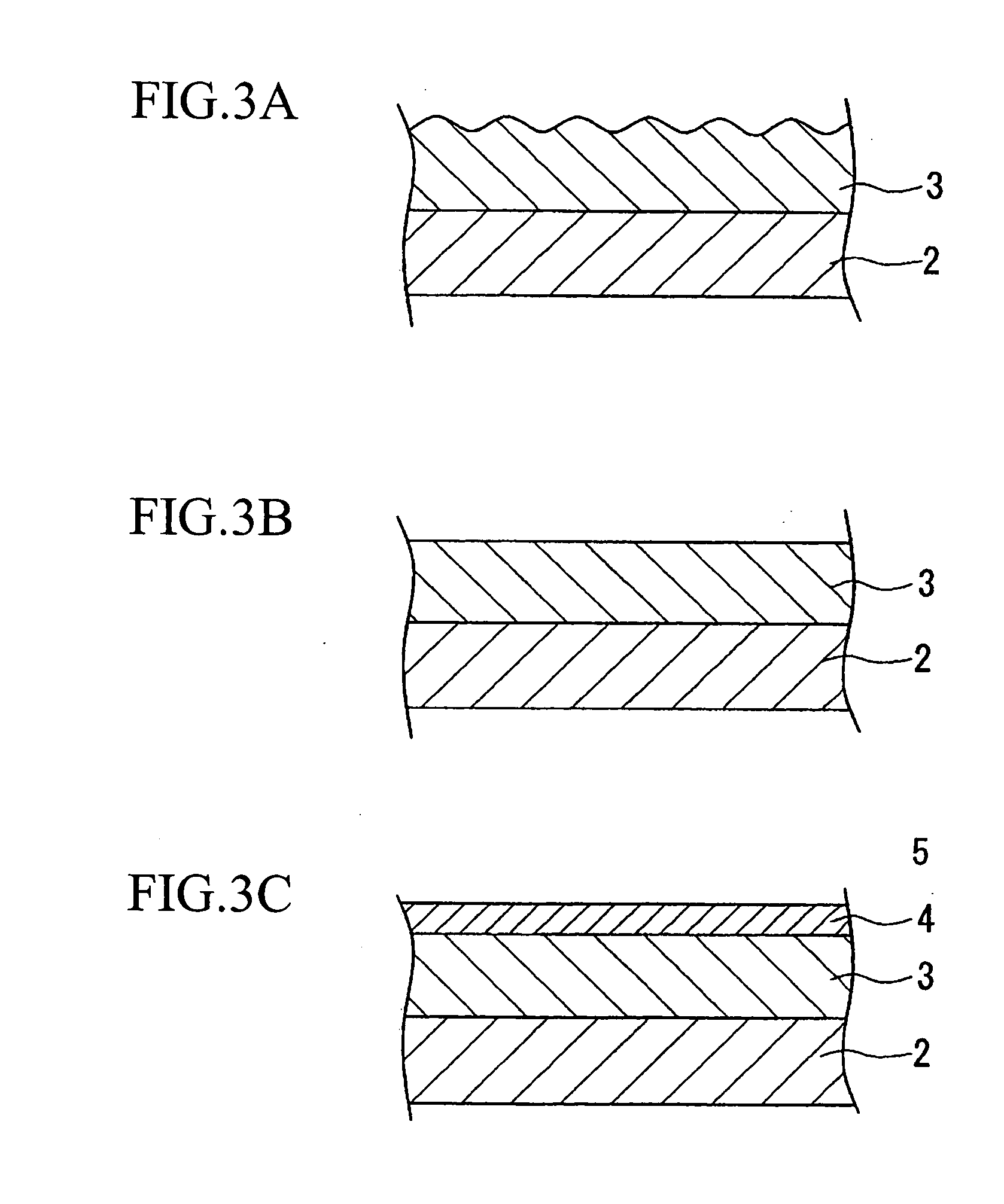Semiconductor substrate, field-effect transistor, and their production methods
- Summary
- Abstract
- Description
- Claims
- Application Information
AI Technical Summary
Benefits of technology
Problems solved by technology
Method used
Image
Examples
examples
[0197] Next, worsening of the roughness at the surface and interfaces when heat treatment is performed prior to polishing based on the above embodiments is explained in detail, referring to FIG. 18 and FIG. 19.
[0198] As an example based on the above seventh embodiment and a comparative example, films were deposited, in both cases using a Si substrate of diameter 200 mm, with a single-wafer reduced-pressure epitaxial growth system employed to deposit films with SiH4 and GeH4 intermixed with the carrier hydrogen gas, at pressures between 5000 and 15,000 Pa and temperatures of 680 to 850° C. FIG. 18 is a flow chart of fabrication of the example and comparative example.
[0199] In this case, prior to annealing treatment and polishing, the first SiGe layer 2, second SiGe layer 3, relaxation layer 4, and strained Si layer 5 were deposited to respective thicknesses of 30 nm, 2.0 μm, 1.0 μm, and 20 nm, as indicated in FIG. 19. The Ge composition ratio of the first SiGe layer 2 was 0. 15, an...
PUM
 Login to View More
Login to View More Abstract
Description
Claims
Application Information
 Login to View More
Login to View More - R&D
- Intellectual Property
- Life Sciences
- Materials
- Tech Scout
- Unparalleled Data Quality
- Higher Quality Content
- 60% Fewer Hallucinations
Browse by: Latest US Patents, China's latest patents, Technical Efficacy Thesaurus, Application Domain, Technology Topic, Popular Technical Reports.
© 2025 PatSnap. All rights reserved.Legal|Privacy policy|Modern Slavery Act Transparency Statement|Sitemap|About US| Contact US: help@patsnap.com



